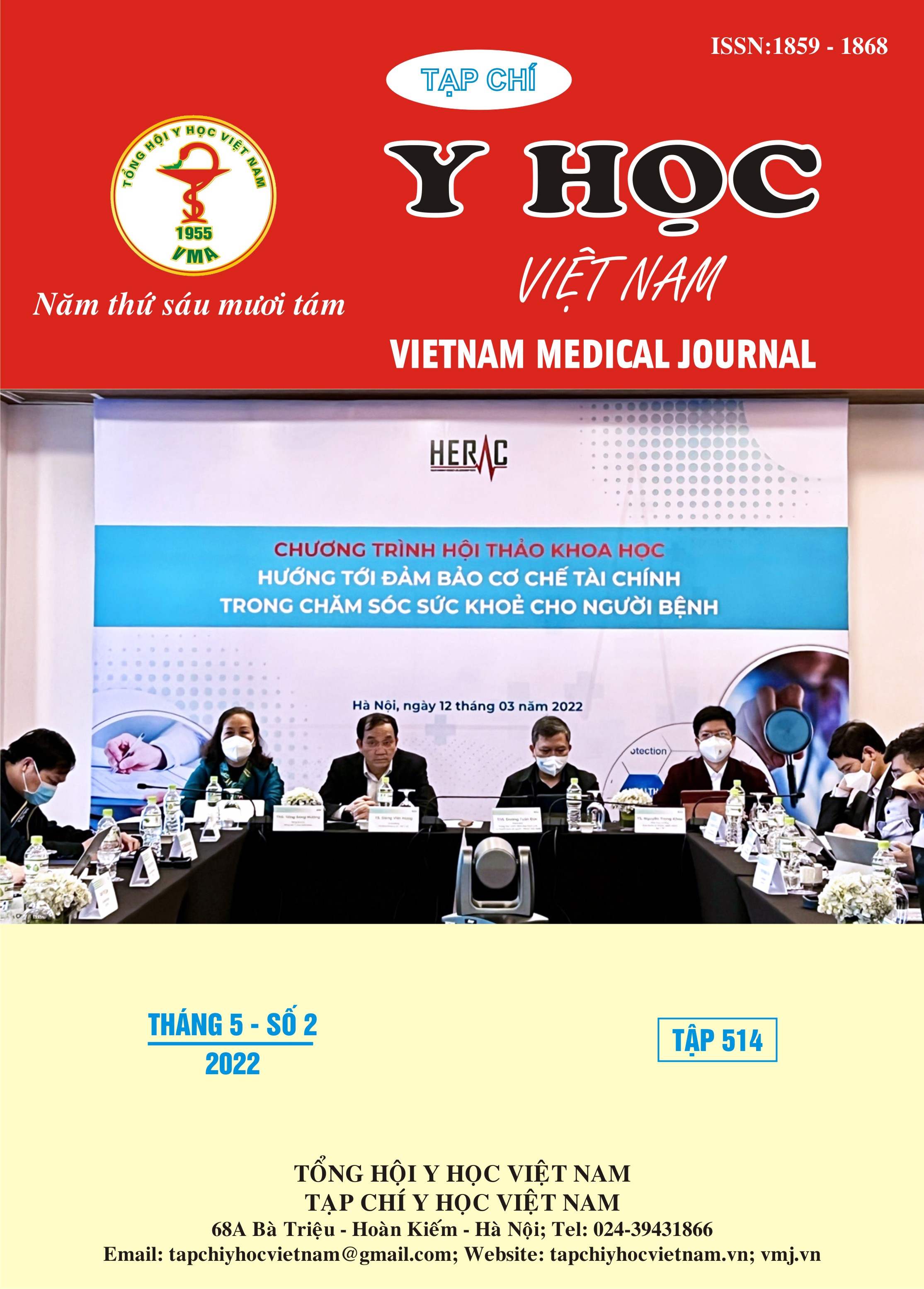RESULTS OF CONSERVATIVE TREATMENT OF SHOULDER DISLOCATION WITH RUPTURE OF THE GREATER TUBEROSITY AT VIET DUC HOSPITAL
Main Article Content
Abstract
Shoulder dislocations are the most common type of dislocation, accounting for approximately 45% of all dislocations [1]. In addition to cases of shoulder dislocation alone, cases of shoulder dislocation with rupture of the greater tuberosity (large tuberosity) are quite common. Objective: to evaluate the results of conservative treatment of shoulder dislocation with rupture of the greater tuberosity at Viet Duc Hospital. Methods: A prospective cross-sectional description of 55 patients with shoulder dislocation accompanied by rupture of the greater tuberosity, aged from 26 to 85 years, was treated conservatively by traction and cast. Rate the results on the Constant scale after 1 and 3 months of cast removal. Results: After 1 month, the average Constant score was 72.18 ± 6.58 points. After 3 months, the average Constant score was 80.4 ± 5.98 points, shoulder function improved with good and very good rating of 94.6%. Conclusion: Conservative treatment of shoulder dislocation with rupture of the greater tuberosity wich little deviation brings high efficiency, low cost, and avoids complications and complications of surgery.
Article Details
Keywords
Shoulder dislocation, greater tuberosity rupture, conservative treatment
References
2 Nguyễn Minh Dương, Nguyễn Xuân Thùy (2016) Kết quả phẫu thuật điều trị gãy đầu trên xương cánh tay bằng nẹp vis khóa tại bệnh viện Việt Đức. Luận văn thạc sĩ y học. Đại học Y Hà Nội.
3 F Khiami 1, A Gérometta 2, P Loriaut (2015) Management of Recent First-Time Anterior Shoulder Dislocations. Orthop Traumatol Surg Res. 2015 Feb;101(1 Suppl):S51-7.
4 Mattyasovszky SG, Burkhart KJ, Ahlers C, et al. Isolated fractures of the greater tuberosity of the proximal humerus: a long-term retrospective study of 30 patients. Acta Orthop. 2011; 82(6):714–720.
5 Antti P Launonen 1, Vesa Lepola, Tapio Flinkkilä, Minna Laitinen, Mika Paavola, Antti Malmivaara (2015) Treatment of proximal humerus fractures in the elderly: a systemic review of 409 patients.
Acta Orthop. 2015 Jun;86(3):280-5.
6 Park TS, Choi IY, Kim YH, Park MR, Shon JH, Kim SI.(1997) A new suggestion for the treatment of minimally displaced fracctures of the greater tuberosity of the proximal humerus. Bull Hosp Jt Dis. 1997;56:171–6.
7 C R Constant, A H Murley (1987) A clinical method of functional assessment of the shoulder. Clin Orthop Relat Res.1987 Jan;(214):160-4.
8 Gaebler C, McQueen MM, Court-Brown CM.(2003) Minimally displaced proximal humeral fractures: epidemiology and outcome in 507 cases. Acta Orthop Scand. 2003;74:580–5.
9 Patrick Platzer 1, Gerhild Thalhammer, Gerhard Oberleitner, Florian Kutscha-Lissberg, Thomas Wieland, Vilmos Vecsei, Christian Gaebler (2008) Displaced fractures of the greater tuberosity: a comparison of operative and nonoperative treatment. J Trauma 2008 Oct;65(4):843-8.


